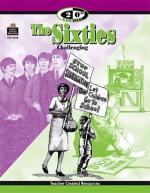|
This section contains 550 words (approx. 2 pages at 300 words per page) |

|
Quality and Growth.
The 1960s finally saw the resolution of two technical issues and problems that had plagued television since its early development: color broadcasting and ultrahigh frequency (UHF) stations. Their resolution led to an improvement in broadcast quality and growth in the number of television stations.
Old Standards.
Color broadcasting was a problem left over from the debate over broadcast technical standards during World War II. CBS, which had no technical patents relating to black-and-white technology, pushed during the mid 1940s for a standard that would have called for color broadcasting, which CBS had developed, and a large number of stations on the UHF band. CBS was opposed by RCA, which had an interest in black-and-white broadcasting and the status quo in regard to the broadcasting band. Joining RCA were the manufacturers of black-and-white and very high frequency (VHF) television...
|
This section contains 550 words (approx. 2 pages at 300 words per page) |

|




